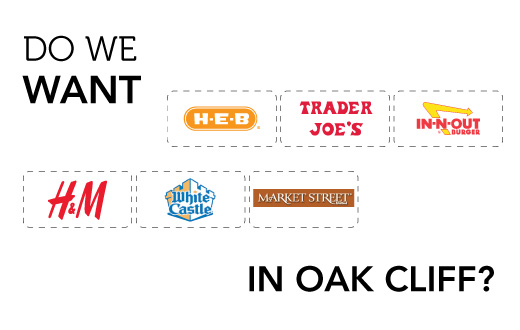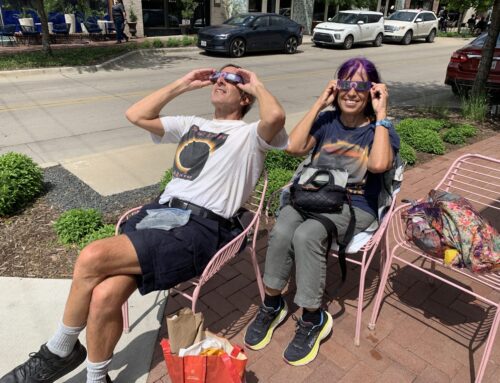Will they come? What’s keeping them away? Can local businesses meet the challenge?
“Retail works in Dallas-Fort Worth,” says Robert E. Young Jr. of The Weitzman Group. “Whether companies are homegrown and going out, or outside coming in, they know that Dallas-Fort Worth is a pretty good place to place their bets.”
When national companies decide to carve out a niche in Dallas, whether it’s a grocer or restaurant or retailer, they all look in the same place.
“Almost 100 percent will start in the Park Cities to Preston Hollow corridor, and then follow the 75 and Tollway corridors, kind of a pie shape up to the north,” says David Shelton of United Commercial Realty.
“The main reason for that is demographics. It’s that plain and simple — the highest concentration of population and the highest concentration of incomes in that corridor.”
Commercial real estate folks tend to sound like broken records when talking about the retail formula: a high number of people living in a given area (population density) who have a lot of money to spend (income) and regularly travel near a specific site (traffic counts) equals a successful business.
It’s a formula that works, they say.
“The fact of the matter is that stores have to go where there are people, people, people,” Young says. “We’re not in the rocket science business; we’re in the logic business: established dense areas with income.”
For the most successful merchants, he says, “in addition to having a good product and good service, you’ve got to be able to have traffic and predict your traffic.”
Not to mention the herd mentality central to the retail world — most companies follow others like cattle into new markets or even specific properties. This is called “tenant mix”, with discount stores or high-end retailers wanting to be grouped with other companies attracting similar shoppers.
That explains, for the most part, why retailers wind up in some areas of the city and not others. But how do they get here in the first place?
That can be attributed to the sheer buying power of Dallasites. Dallas and Fort Worth combined hold nearly 28 square feet of retail for every person living here — “almost more than Manhattan,” Young says, and substantial compared to the national average of roughly 23 square feet per person.
Dallas also lacks barriers that generally deter new companies, says Mike Geisler of Venture Commerical.
“It’s an affordable place to buy real estate, affordable construction, easy to find labor and comparatively easy to get through city processes,” he says, adding that the biggest barrier for most companies is competition from those who arrived here first.
As for other companies that should be making Dallas their home, “the list is almost endless,” Shelton says. “There are a lot of folks that probably should be in Dallas that aren’t here, and on the flipside, a lot of people that shouldn’t be in Dallas are here. Dallas-Fort Worth is one of the largest metropolitan areas in the country and will continue to be a top-of-the-list high point for anyone expanding in the retail and restaurant world.”






